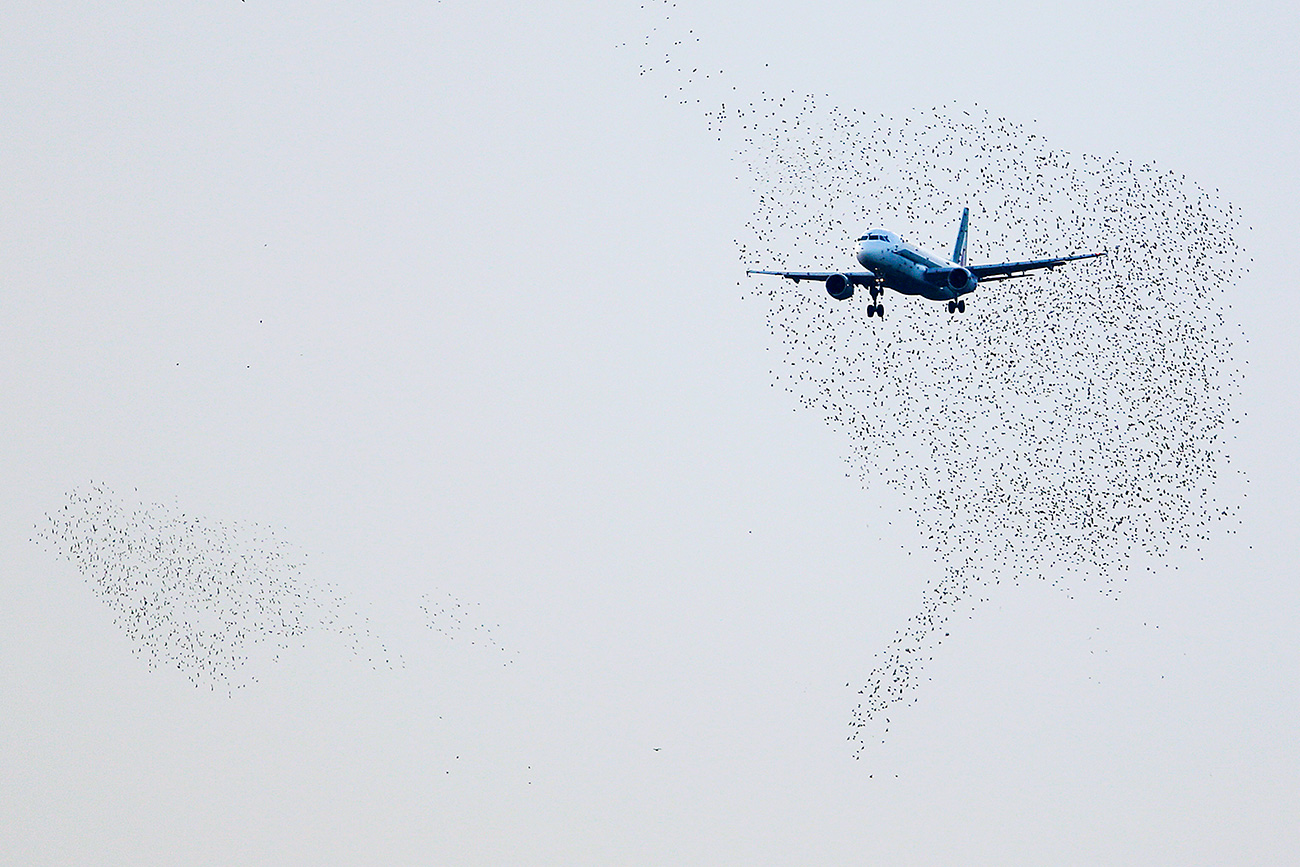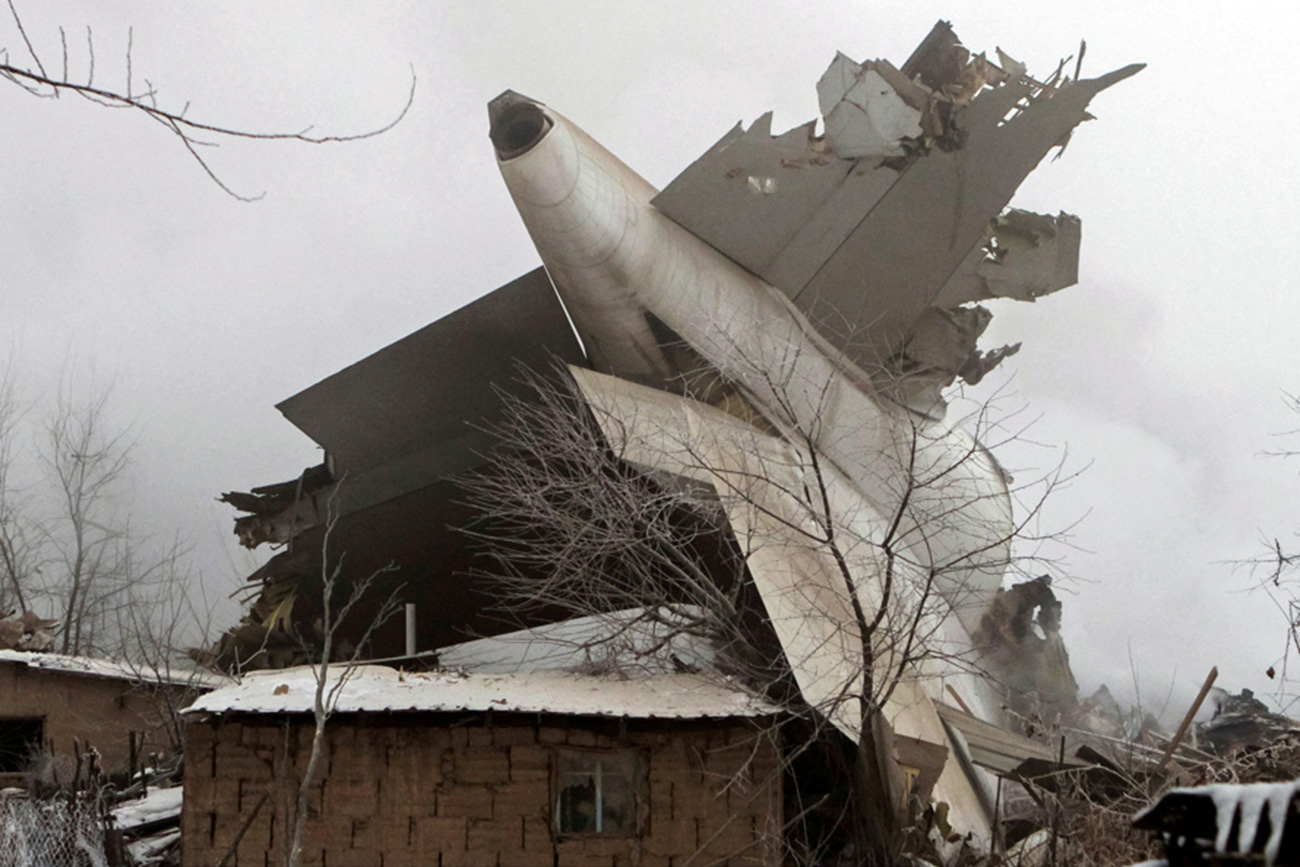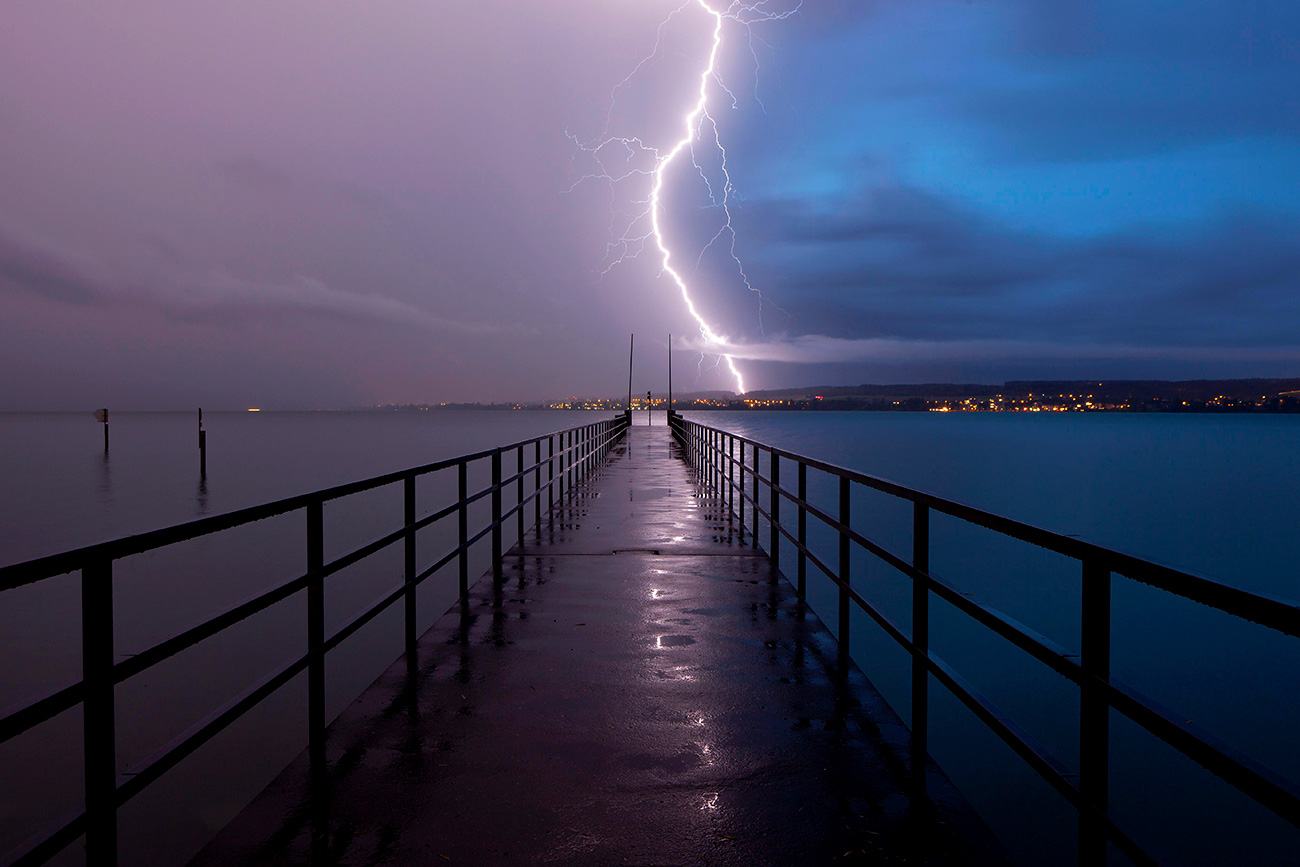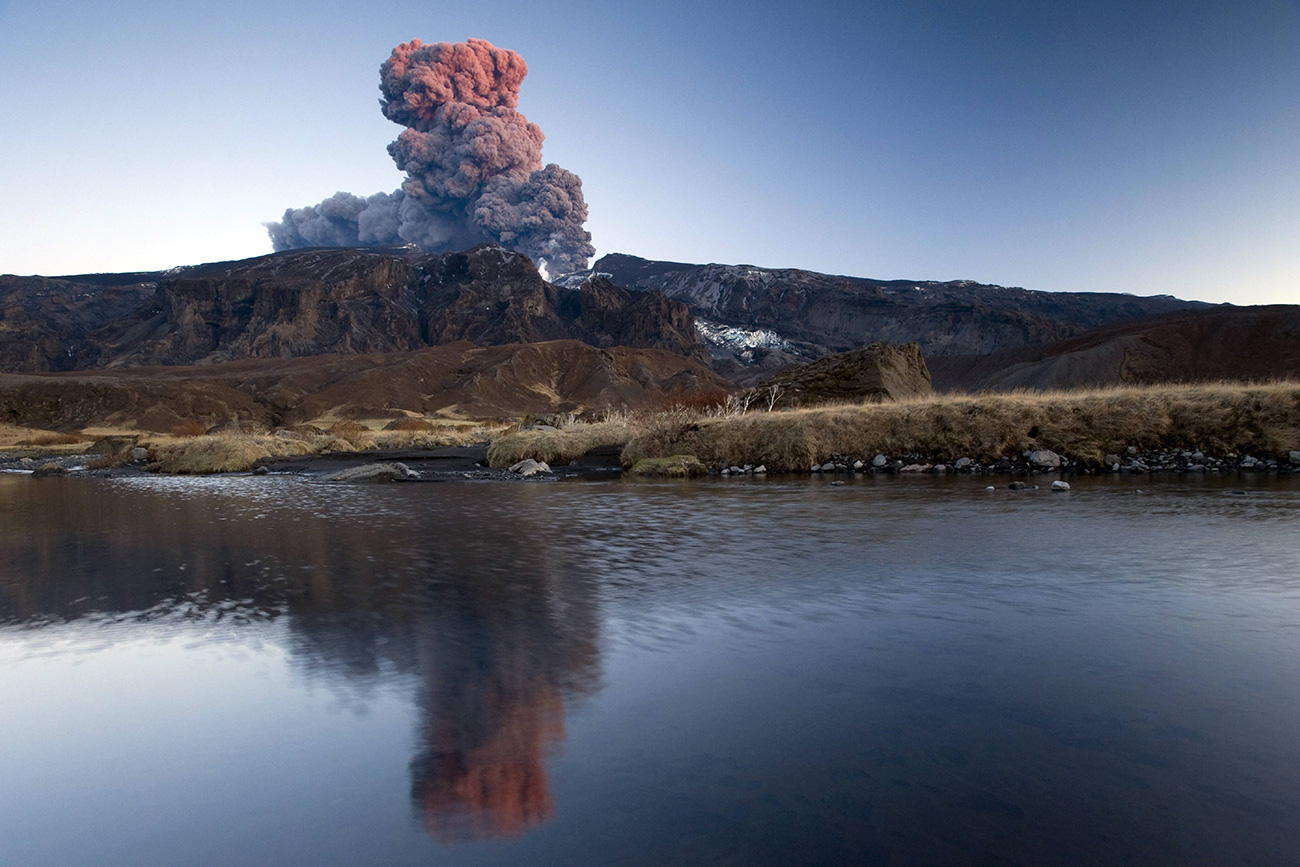
An Alitalia plane approaches to land as starlings fly at Fiumicino international airport in Rome October 14, 2013. Italy will have to notify a planned government-led 500-million-euro bailout of near-bankrupt airline Alitalia to EU regulators who will then assess whether the measure complies with EU state aid rules, the European Commission said on Monday.
ReutersOn May 1 an Aeroflot Boeing 777 jet hit severe clear air turbulence on a flight from Moscow to Bangkok. As a result, at least 27 passengers were injured, with some suffering serious fractures and bruises.
The consequences of a turbulence on Aeroflot flight to Bangkok. Source: Youtube / Dmitriy Varfolomeev
According to data from Plane Crash Info, just 6 percent of all air accidents happen due to weather conditions. However rough weather often gets in the way of a pleasant flight and causes disturbances to the plane’s systems and sometimes contributes to pilot errors.
RBTH analyzed data from the last few decades to understand what other external factors cause unpleasant incidents in the skies.
 Plane debris is seen at the crash site of a Turkish cargo jet near Kyrgyzstan's Manas Airport outside Bishkek, January 16, 2017. REUTERS/Vladimir Pirogov
Plane debris is seen at the crash site of a Turkish cargo jet near Kyrgyzstan's Manas Airport outside Bishkek, January 16, 2017. REUTERS/Vladimir Pirogov
On Jan. 16, 2017 a Turkish cargo jet crashed near Kyrgyzstan’s Manas Airport claiming the lives of at least 37 passengers. The aircraft was supposed to make a stopover at Manas, near the capital city Bishkek, on its way from Hong Kong to Istanbul.
It crashed when trying to land in dense fog. The doomed plane ploughed on for a few hundred meters through the Dachi Suu village, home to hundreds of families. It damaged dozens of buildings.
Fog was also named among the factors that caused the Tenerife airport disaster on the Canary Islands in 1977. It was the deadliest accident in aviation history, claiming 583 lives. Two Boeing 747 passenger jets collided on the runaway at Los Rodeos Airport (now Tenerife North Airport). The fog was so thick that neither aircraft could be seen from the other and the air traffic controller could neither see the runaway nor the planes.
According to Aviation Safety Network (ASN) data, poor visibility conditions have led to 125 incidents since 1943, claiming more than 5,000 lives.
 Coffins of Tans Peru airline Boeing 737-200 victims weating to be send to Lima under heavy rain at the tarmac of the Pucallpa's airport before, August 2005. AFP
Coffins of Tans Peru airline Boeing 737-200 victims weating to be send to Lima under heavy rain at the tarmac of the Pucallpa's airport before, August 2005. AFP
Over the last two decades there have only been four cases when aircraft crashed due to heavy rainfall, according to ASN data. The most recent incident occurred in 2005 in Peru.
A Boeing 737 was approaching Pucallpa on its way from Lima but weather conditions deteriorated with “towering cumulus clouds, strong winds and heavy rainfall.” The crew was unable to land and the plane fell into swampland. 40 people died as a result of the crash.
A more recent incident happened in 2014 with a TransAsia Airways plane that attempted to land in a storm and crashed on a small Taiwanese island, killing 48 passengers and wrecking houses and cars on the ground.
 Lightning strikes are not a rare occurance but it does not usually lead to serious consequences. Global Look Press
Lightning strikes are not a rare occurance but it does not usually lead to serious consequences. Global Look Press
Thirteen people have died in plane crashes as a result of lightning strikes since 2000. According to ASN, seven such cases have been recorded in different parts of the world.
The deadliest incident occurred in 2001, when a plane from Barcelona to Algeria got into an area of severe turbulence and rain, and was hit by lightning. Control was lost and the aircraft crashed into the sea, claiming the lives of all 10 people on board.
In fact, lightning strikes airplanes quite often and usually this does not lead to tragic consequences as modern planes are designed to handle the electric charge and not pass it on to the electronic system of the liner and the passengers and crew.
For instance, in April 2017, a Wizzair Airbus A321 jet was struck by lightning on its way from Poland to Belgium, and two aircraft were hit by lightning in St. Petersburg when they were landing. No one was hurt in any of the incidents and the planes managed to land safely.
 Ash clouds from the eruption of the Eyjafjallajökull volcano in Iceland in 2010 affected flights to and from Europe, with a number of major airports closed to all traffic. Global Look Press
Ash clouds from the eruption of the Eyjafjallajökull volcano in Iceland in 2010 affected flights to and from Europe, with a number of major airports closed to all traffic. Global Look Press
There are around 700 active volcanos in the world, and volcanic ash presents a huge problem for modern airplanes. Ash particles might get into the heated turbine blades, melt and cover the moving parts and stop the turbines.
The International Civil Aviation Organization has records of 83 “encounters” between aircraft and volcanic ash between 1935 and 2008. Eight of those led to temporary engine failure.
The most famous case is from 1982, when British Airways Flight 9 flew through an ash cloud produced by the eruption of Mount Galunggung in Indonesia. The plane lost power in all four engines and descended from 37,000 feet (11,000 meters) to just 13,500 feet (4,100 meters) before the crew managed to restart three of the engines and land safely.
A similar incident happened in 1989 when KLM Flight 867 from Amsterdam to Tokyo flew through a thick cloud of volcanic ash from Mount Redoubt. After losing power in four engines and descending more than 14,000 feet (4,200 meters), the pilot managed to restart the engines and landed the plane.
These incidents led to the creation of a network of Volcanic Ash Advisory Centers to watch and warn the airlines of the risk of potential volcanic eruptions. Since then there were almost no major incidents with planes entering volcanic ash.
 An Alitalia plane approaches to land as starlings fly at Fiumicino international airport in Rome October 14, 2013. Reuters
An Alitalia plane approaches to land as starlings fly at Fiumicino international airport in Rome October 14, 2013. Reuters
According to ASN, since 1953 there have been 74 incidents involving collisions with birds. According to a Rossiyskaya Gazeta, there were 328 cases of such collisions in Russia and more than 5,000 worldwide in 2015.
The seriousness of the collision with a bird might depend on the size of a bird and on where it hits the plane. It might shut down the engine or smash a hole in different parts of the plane disrupting the air pressure inside. It can also lead to a loss of altitude and disruption of power or other critical systems.
The most recent incident happened on May 3 when a Turkish Airlines aircraft had to return to Moscow’s Vnukovo Airport after a collision with a flock of birds. A similar event occurred with a Belavia plane in March. The aircraft had to return to the Minsk Airport after a clash with a flock of birds.
Even though incidents happen quite often, fortunately they do not always lead to tragic consequences. All too often, however, the planes need to be repaired and some airlines try to sue the airports that are responsible for ensuring a secure takeoff.
If using any of Russia Beyond's content, partly or in full, always provide an active hyperlink to the original material.
Subscribe
to our newsletter!
Get the week's best stories straight to your inbox